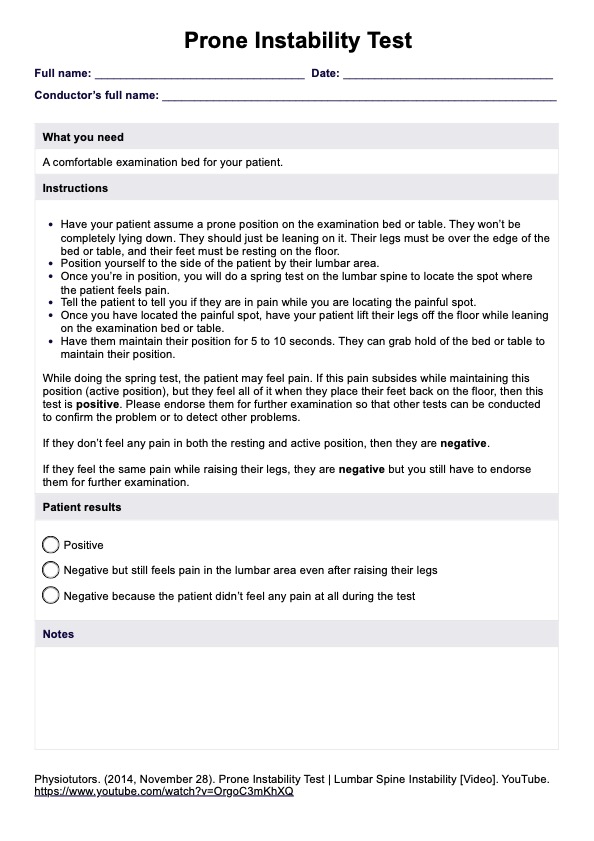The Prone Instability Test is a physical examination technique. The instructions are simple, and it can be accomplished in 1 to 5 minutes.

Prone Instability Test
Conduct the Prone Instability Test to assess patients and determine if their back pain is caused by lumbar instability.
Prone Instability Test Template
Commonly asked questions
That depends. The technique itself isn't painful. However, patients might feel pain during the part where the professional does a spring test or when the patient has to lift their legs and feet. The pain will come from an already-existing condition, though.
Yes and no. Yes, because the test specifically looks for a certain factor in order to test positive, which is the subsiding of lumbar pain when patients lift their legs. No, because the pain might not necessarily be the fault of lumbar spine instability, other physical examination tests will have to be conducted to fully confirm what the problem is (like the passive lumbar extension test) or to reproduce results.
EHR and practice management software
Get started for free
*No credit card required
Free
$0/usd
Unlimited clients
Telehealth
1GB of storage
Client portal text
Automated billing and online payments











